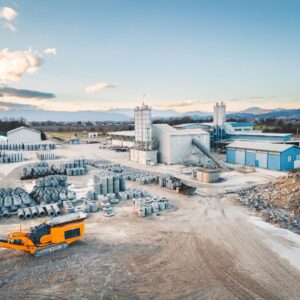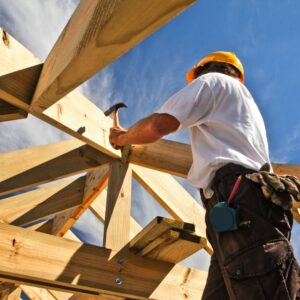Construction trends are rapidly evolving due to technological advancements, changing market needs, and the growing concern for sustainability. Here are some of the main trends all builders should be aware of to stay competitive and adapt to the sector’s changes:
Sustainable Construction and Energy Efficiency
Sustainability is one of the strongest trends in construction. Builders must integrate green building practices that reduce environmental impact. This includes:- Use of recyclable or low-impact materials.
- Energy-efficient design and construction of buildings, such as the use of solar panels, thermal insulation, and high-performance windows.
- Green certifications such as LEED (Leadership in Energy and Environmental Design) to validate sustainable efforts in projects.
BIM (Building Information Modeling) Technology
BIM is a technology that allows the creation of 3D digital models of a project. This tool is essential for optimizing planning, design, construction, and building operation. Some advantages of using BIM include:- Improved collaboration between everyone involved in the project (architects, engineers, builders).
- Helps detect problems before construction, reducing errors and costs.
- Allows for more efficient building lifecycle management, even after construction is completed.
3D Printing in Construction
3D printing is beginning to transform into a key trend in the construction industry. Using giant printers, it is possible to create structural components or even build entire homes. The benefits include:- Reducing costs and time in construction.
- Efficient use of materials and waste reduction.
- Ability to create custom structures quickly and economically.
Innovative Materials
Builders are adopting more innovative and sustainable materials, such as:- Recycled concrete: Reduces environmental impact and allows for the reuse of materials from previous projects.
- Bio-based materials: Such as treated wood, which offers a more eco-friendly and sustainable option for construction.
- Nanomaterials: Improve the durability, strength, and efficiency of buildings.
- Self-healing materials: Materials that can repair themselves when minor damage occurs.
Automation and Robotics
Automation in construction is gaining ground with the use of robots and automated systems for repetitive tasks. This improves precision, efficiency, and safety on the site. Some examples include:- Robots for bricklaying or painting surfaces.
- Drones to monitor construction progress and conduct inspections.
- Exoskeletons to help workers carry heavy materials and reduce the risk of injuries.
Modular Construction
Modular construction involves the fabrication of prefabricated modules in a factory, which are then assembled at the construction site. This approach has many advantages:- Reduces construction costs and time.
- Greater quality and process control as it is done under controlled conditions.
- Flexibility to expand or modify the structure in the future.
Designing Flexible and Multifunctional Spaces
With changing consumer needs, especially after the pandemic, there has been an increased demand for more flexible spaces. Spaces must be easily adaptable to different functions, such as offices that transform into break areas or homes that can accommodate home offices. Builders must integrate:- Open and adaptable spaces.
- Movable furniture and walls that allow reconfiguration based on needs.
Climate-Resilient Construction
Given the increase in extreme weather events like hurricanes, floods, and heatwaves, builders must design and build with materials and techniques that make buildings more resilient to climate change. This includes:- Enhanced drainage systems to manage flooding.
- Use of disaster-resistant materials, such as those resistant to wind or fire.
- Smart designs that minimize the impact of adverse weather conditions.
Augmented Reality (AR) and Virtual Reality (VR)
AR and VR are revolutionizing the way projects are designed, planned, and visualized. Some applications include:- 3D visualization of designs for clients to see the project before it is built.
- Construction simulations to identify potential problems before actual execution.
- VR training for workers, improving safety and efficiency on the construction site.
Circular Economy in Construction
The concept of a circular economy seeks to maximize resource use and reduce waste. In construction, this translates into:
- Recycling materials from previous demolitions.
- Reusing components in new projects.
- Efficient management of waste generated on the construction site.
Conclusion
Staying up to date with these construction trends is essential for builders to remain competitive and sustainable. Adopting innovative technologies and more eco-friendly approaches not only improves the quality and efficiency of projects but also allows them to meet changing customer expectations and environmental regulations.




